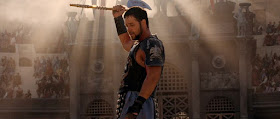Character growth is one of the most engaging, human aspects of stories. Natural disasters can occur, accidents can happen, people can die, but it's the way characters react to disasters, the repercussions and reaction to accidents, and the ripple effect of death to those left behind that really make stories connect with readers.
The title Hero's Journey and Heroine's Journey are given to the journey characters go on during a story. They are about the change and internal growth within characters that happens as stories progress. This can be over a single novel, or even a series. The main hero or heroine is the protagonist, but there can be others who go on smaller journeys.
The titles sound male/female, and indeed they originated based on stereotypical journeys, but a female character might go on a Hero's Journey, and vice versa. It's simply the type of journey a given character might go on.
The Hero's Journey is an outward journey, a call to adventure. The hero might feel an injustice, or something has been taken, and sets off either to retrieve what is lost, or find answers. Gladiator and The Hunger Games are great examples of this.
The Heroine's Journey is an inward journey, an awakening. She is perhaps disillusioned, feels something is missing, is unhappy with her life, and has a realisation.
The term Hero's Journey was originally coined by Joseph Campbell, author of Hero with a Thousand Faces. He also controversially claimed there was no need for a Heroine's Journey, because the Heroine was the home the Hero returned to. But many argue that the difference is that of an inward versus external journey, physical versus emotional, or plot versus character driven narrative.
This is his basic pattern for a Hero's Journey, which I'll demonstrate using Gladiator:
ORDINARY WORLD: Maximus is general of the Roman army, victorious and thinking of returning home to his wife and son.
CALL TO ADVENTURE: Emperor Marcus Aurelius asks him to be his heir to the Empire.
REFUSAL OF THE CALL: Maximus is reluctant at first, but following the Emperor's death, is forced on a path he did not wish to take.
MEETING WITH THE MENTOR: Maximus is found by a band of slaves and meets Proximo, leader of a Gladiator camp.
CROSSING THE FIRST THRESHOLD: Maximus fights in the gladiator arena for the first time.
TESTS, ALLIES, ENEMIES: As the story unfolds, Maximus is tested in the arena. His allies include fellow gladiators, Proximo, Lucilla, and old army friends. Commodus is the enemy.
APPROACH TO THE INMOST CAVE: After his victory in the Colosseum, Commodus and his nephew enter the arena to congratulate the victors. Maximus must choose between attempting to kill Commodus now and in front of his young nephew, or wait for a better opportunity.
SUPREME ORDEAL: Maximus is wounded by Commodus prior to the final showdown, and they fight to the death.
REWARD (SEIZING THE SWORD): Despite being wounded fatally, Maximus frees his fellow brothers, declares the wishes of Marcus Aurelius and ensures Lucius is safe from his uncle.
RESURRECTION: Maximus is reunited with his wife and child in the afterlife.
RETURN WITH THE ELIXIR: Maximus dies leaving the people of Rome with hope for the future Marcus Aurelius wanted for them.
In contrast to Campbell's Hero's Journey model, below is Maureen Murdock’s model, described in The Heroine’s Journey: Woman’s Quest for Wholeness:
HEROINE SEPARATES FROM THE FEMININE: often a mother or societally prescribed feminine role.
IDENTIFICATION WITH THE MASCULINE AND GATHERING OF ALLIES: for a new way of life. This often involves choosing a path that is different than the role prescribed for him/her deciding to gear to”fight” an organization, role, or group that is limiting her, or entering some male/masculine-defined sphere.
ROAD OR TRIALS AND MEETING OGRES AND DRAGONS: Heroine encounters trials and meets people who try to dissuade her from pursuing her chosen path and/or destroy her(ogres and dragons or their metaphorical counterparts).
EXPERIENCING THE BOON OF SUCCESS: by overcoming the obstacles. This would typically be where the hero’s or “shero’s” (a female protagonist on a hero’s journey) tale ends.
HEROINE AWAKENS TO FEELINGS OF SPIRITUAL ARIDITY / DEATH: because the new way of life is too limited. Success in this new way of life is either temporary, illusory, shallow, or requires a betrayal of self over time.
INITIATION AND DESCENT TO THE GODDESS: The heroine faces a crisis of some sort in which the new way is insufficient and falls into despair. All of her “masculine” strategies have failed her.
HEROINE URGENTLY YEARNS TO RECONNECT WITH THE FEMININE: but cannot go back to her initial limited state/position.
HEROINE HEALS THE MOTHER/ DAUGHTER SPLIT: reclaiming some of her initial values, skills or attributes (or those of others like her) but views them from a new perspective.
HEROINE HEALS THE WOUNDED MASCULINE WITHIN: Heroine makes peace with the “masculine” approach to the world as it applies to herself.
HEROINE INTEGRATES THE MASCULINE AND FEMININE: to face the world or future with a new understanding of herself and the world/life. Heroine sees through binaries and can interact with a complex world that includes her but is larger than her personal lifetime or geographical/cultural milieu.
Of course there are many variants, and stories involving both an external journey and an inward journey to varying degrees, and as writers we can create depth in our stories by incorporating both the Hero's Journey and the Heroine's Journey, either in one or more character.


No comments:
Post a Comment